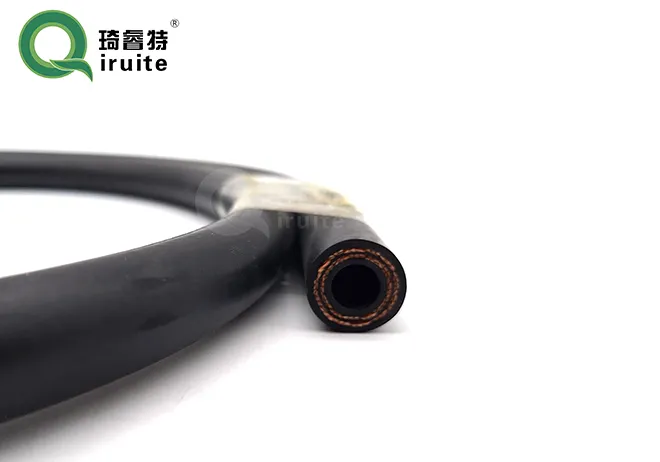Concealed Air Conditioning Piping Solutions for Enhanced Aesthetic and Efficient Cooling
Concealed AC Piping A Guide to Efficient HVAC Installation
In the realm of modern construction and design, the integration of heating, ventilation, and air conditioning (HVAC) systems plays a crucial role in maintaining comfort and ensuring energy efficiency. One emerging trend in HVAC installations is the concept of concealed AC piping. This approach not only optimizes aesthetics but also enhances the overall performance of the air conditioning system. In this article, we will delve into the advantages, considerations, and best practices for concealed AC piping, making it a topic of interest for homeowners, builders, and HVAC professionals alike.
What is Concealed AC Piping?
Concealed AC piping refers to the installation of air conditioning piping systems within walls, ceilings, or floors, rendering them invisible to the naked eye. This method contrasts with traditional installations, where piping is typically exposed, potentially detracting from a building’s interior design. Concealed piping allows for a cleaner, more streamlined appearance and can be especially beneficial in residential and commercial settings where aesthetics are paramount.
Advantages of Concealed AC Piping
1. Aesthetic Appeal One of the primary benefits of concealed AC piping is the improved visual appeal of a space. By hiding the pipes, ducts, and other components, designers can create a more cohesive and attractive interior. This is particularly advantageous in modern homes and upscale commercial spaces where design plays a significant role in the overall experience.
2. Space Optimization Concealing AC piping can free up valuable wall and floor space, allowing for more flexible furniture arrangements and design possibilities. This is especially crucial in smaller homes and apartments where every square inch matters.
3. Protection from Damage Exposed pipes are susceptible to wear and tear, as well as damage from various factors like weather, physical impacts, or pests. Concealed piping systems are less likely to suffer from such issues, potentially prolonging their lifespan and requiring less maintenance.
4. Improved Efficiency Concealed installations can sometimes lead to improved energy efficiency. Properly insulated piping hidden within walls or ceilings can minimize heat loss or gain, thus allowing the HVAC system to operate more effectively. This can translate to lower energy bills and a reduced carbon footprint.
5. Noise Reduction Concealed piping can also help in reducing operational noise associated with AC systems. By placing the pipes inside the walls, the sound of refrigerant flowing or the operation of compressors is less likely to disturb the occupants of the space.
Considerations When Planning for Concealed AC Piping
While the benefits of concealed AC piping are substantial, there are also considerations that homeowners and builders should keep in mind
concealed ac piping

1. Initial Costs Concealed piping installations can come with higher upfront costs compared to traditional exposed systems. The complexity of installation may require more skilled labor and additional materials, impacting the overall budget.
2. Accessibility for Maintenance One of the challenges of concealed systems is accessibility for repairs or maintenance. It’s essential to ensure that access points are strategically placed so that technicians can easily reach the piping if issues arise. This may involve planning ahead during the design phase.
3. Building Codes and Regulations Depending on the location, there may be specific building codes and regulations that govern concealed piping installations. It’s imperative to consult with local authorities and ensure compliance with all necessary guidelines to avoid potential legal issues.
4. System Design Proper planning and system design are crucial for the success of concealed AC piping. Factors such as pipe size, layout, and insulation must be carefully considered to avoid complications during installation and operation.
Best Practices for Installation
To achieve the best results with concealed AC piping, consider the following best practices
- Engage Professionals Always work with experienced HVAC professionals who are knowledgeable about concealed piping techniques and local building codes.
- Use Quality Materials Investing in high-quality materials will enhance system performance and durability.
- Plan for Assessment Incorporate access panels where necessary, allowing for easy inspection and maintenance without compromising the aesthetic appeal of the space.
- Ensure Proper Insulation Adequately insulate pipes to maximize energy efficiency and prevent moisture issues.
Conclusion
Concealed AC piping represents a progressive step in HVAC design and installation, combining aesthetic considerations with practical benefits. By hiding pipes within walls and ceilings, homeowners and builders can create spaces that are not only visually pleasing but also efficient and functional. However, careful planning and professional guidance are critical to overcoming potential challenges and reaping the full rewards of this modern approach. As the trend continues to gain momentum in the construction industry, concealed AC piping will undoubtedly play a pivotal role in shaping the future of HVAC systems.
-
Ultimate Spiral Protection for Hoses & CablesNewsJun.26,2025
-
The Ultimate Quick-Connect Solutions for Every NeedNewsJun.26,2025
-
SAE J1401 Brake Hose: Reliable Choice for Safe BrakingNewsJun.26,2025
-
Reliable J2064 A/C Hoses for Real-World Cooling NeedsNewsJun.26,2025
-
Heavy-Duty Sewer Jetting Hoses Built to LastNewsJun.26,2025
-
Fix Power Steering Tube Leaks Fast – Durable & Affordable SolutionNewsJun.26,2025

